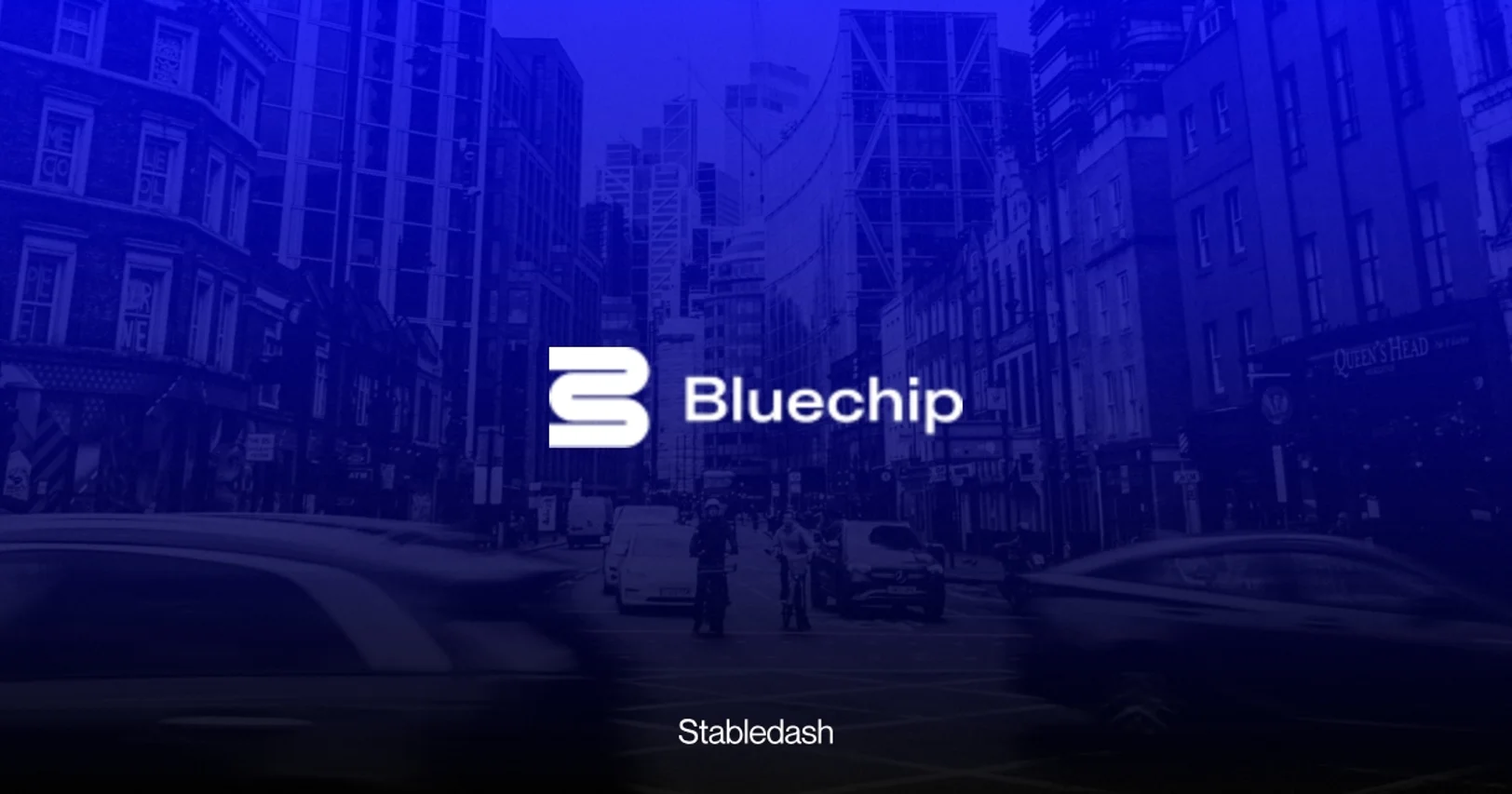Stableminded
Replacing SWIFT: How Conduit Uses Stablecoins to Move $10B Annually Across Borders
Conduit blends regulatory precision with innovative infrastructure to unlock $150 trillion market potential.
November 5, 2025

Conduit creates near-instant, low-cost payment rails with strong banking integrations, powering settlements across 130+ markets and achieving 16× transaction growth to a $10 billion run rate.
Emphasizing licenses and institutional partnerships, Conduit reduces risks and costs in a post-FTX era, meeting banks on their terms for seamless fiat-stablecoin connectivity.
Targeting high-adoption regions with inflation-driven demand and remittance inefficiencies, Conduit focuses on strategic alliances with fintechs and processors to scale amid regulatory challenges.
A Crypto Origin Story Forged in Beijing
Like many seasoned tech operators, Omid’s path to crypto was not linear. His first encounter left him with a healthy dose of skepticism. In 2018, while working for a high-growth mobility company in Beijing, he was part of a team that explored a novel fundraising method. He recalls it as a time when they had this "crazy idea of doing an ICO."
This was the height of the Initial Coin Offering boom, a period widely regarded as crypto's "Wild West." In the first half of 2018 alone, projects raised a record $7 billion, yet the market was characterized by hype and high failure rates. Studies from the era show that nearly half of all ICOs failed to raise any capital, and by late 2018, 86% of top projects from the previous year were trading below their initial price. For a pragmatic operator, the experience was a lesson in the dangers of speculative technology. Reflecting on the chaos of that market cycle, Omid concluded, "I don't think I'm going to touch crypto ever again."
From ICO Skeptic to Mainstream Believer at Robinhood
That resolution changed when he joined Robinhood. Initially, he notes, "I actually felt somewhat safe," as the platform was still primarily focused on traditional equities. However, his perspective shifted as the company "morphed more and more into a crypto company." Robinhood’s strategic pivot toward digital assets, which began with offering Bitcoin and Ethereum in early 2018, provided a front-row seat to the explosion in retail demand.
But it was the company’s approach to compliance that shaped his long-term perspective. “At Robinhood, we were often criticized for being too cautious,” he says. “But after 2022, when others collapsed, that discipline became our advantage.” It’s a philosophy he carried into Conduit, where regulatory alignment isn’t a box to check—it’s a competitive moat.
Why Conduit Exists: Fixing Global Money Movement
Cross-border payments still rely on SWIFT, a system built in 1973. Despite its scale, the network remains slow, expensive, and fragmented. To compensate, multinational businesses maintain roughly $4 trillion in pre-funded accounts worldwide—idle liquidity locked up as a workaround for inefficiency.
Conduit’s mission is to replace this outdated architecture with stablecoin-native payment rails that move value near-instantly, at a fraction of traditional costs. But unlike many crypto payment startups that focus on speed alone, Conduit emphasizes compliance, banking connectivity, and regional integration. The company’s two dozen global banking partners provide on-the-ground fiat access across key corridors, ensuring that both the “crypto layer” and “banking layer” operate seamlessly together.
Conduit is positioning itself as the connective tissue between stablecoin liquidity and real-world business activity. Its platform powers stablecoin-based settlements for businesses across 130+ markets, backed by $50 million in venture funding from Dragonfly, Coinbase Ventures, and Circle Ventures. Over the past year, Conduit’s transaction volume has scaled 16×, with an annualized run rate approaching $10 billion—growth driven by a strategy that blends local presence with regulatory precision.
Why Latin America Became the Unavoidable Next Step
The catalyst for Omid's next move came from a specific market opportunity where the potential of crypto met the constraints of a mainstream platform. He saw a perfect storm of need and opportunity that crypto was uniquely positioned to address. The turning point arrived, he explains, "when I saw that Robinhood wasn't ready to go into the Latin American market."
This hesitation from a major US fintech player highlighted a critical gap. As an operator, Omid understood the immense potential that was being left on the table. The data from the region paints a clear picture of why:
- Urgent Economic Need: Chronic inflation, which surpassed 100% in Argentina in 2023, has pushed citizens toward stablecoins as a necessary tool for wealth preservation. This is reflected in adoption rates, with Argentina (19.8%) and Brazil (18.6%) leading the region.
- Massive Market Size: Latin America is the second-fastest growing crypto market globally, receiving approximately $415 billion in cryptocurrency value between mid-2023 and mid-2024.
- Financial Inclusion Gaps: While progress has been made, a 2023 Mastercard study noted that 21% of the population in Latin America remains unbanked. Simultaneously, mobile wallet adoption has soared to over 60%, creating a digitally native user base ready for new financial solutions.
- Inefficient Payments: The average cost of sending remittances to the region stands at 5.9%, nearly double the UN's target. Crypto-based rails offer a faster, more cost-effective alternative.
Inside Conduit’s Infrastructure Stack
Conduit offers its clients two layers of access:
- API Integration: For platforms such as exchanges, PSPs, and neobanks that want to embed stablecoin settlements directly into their own apps.
- Web Portal: For businesses that prefer a ready-to-use interface to send or receive payments in fiat or stablecoins.
Behind the scenes, Conduit manages complex multi-bank relationships, direct integrations with local clearing houses (like SEPA in Europe or ACH in Colombia), and real-time reconciliation infrastructure. The goal: make moving stablecoins across jurisdictions as smooth as sending a domestic wire.
This infrastructure-first approach allows Conduit’s clients ranging from remittance companies and payment processors to card issuers to build on top of its rails instead of reinventing them.
The Compliance Advantage
In a post-FTX world, regulatory readiness is existential. Conduit’s approach is to get licensed even in markets where it’s already compliant, reducing dependency on intermediaries and improving transaction economics for clients.
“Licensing is about more than risk—it’s about efficiency,” Omid explains. “The closer we are to the regulatory frameworks in each country, the more we can pass savings back to our customers.”
That mindset has helped Conduit win trust from institutional partners who might otherwise hesitate to handle digital assets. In Omid’s words: “We meet banks where they are, not where we want them to be.”
Key developments to watch in the next 12 to 18 months will include:
- Strategic Partnership Archetypes: The most critical partnerships will likely be with established local fintechs, regional neobanks, and cross-border payment providers who already have user trust and distribution. Forging alliances with these players will be essential for scaling quickly.
- Metrics of Success: Beyond revenue, the key performance indicators will be the volume of transactions processed through partners and the number of active developers building on Conduit's platform. These metrics will validate the utility and adoption of the underlying infrastructure.
- Navigating Hurdles: The primary challenges will be navigating the fragmented regulatory landscape across different Latin American countries and competing with both traditional payment incumbents and government-backed real-time payment systems like Brazil's Pix.
The Bet on Inevitability
For someone who's worked across continents and built partnerships at scale, Omid sees Conduit differently than his previous roles. "At Robinhood, it always felt like we're making a bet," he reflects. "But in this industry, with Conduit, I know it's happening. The writing is on the wall."
His focus is surgical: five strategic partnerships that span exchanges, remittance companies, card issuers, and PSPs—all sharing one common thread: they serve business customers who need stablecoin rails. "If we can go public and say we're working with these companies, we're going to enter next year with a lot of credibility."
So Conduit is focusing on companies that see a $150 trillion cross-border payment market ripe for disruption and want to move now, not later.
For Omid, spending his second month at the company between Blockchain Rio and StablePoint Mexico City, working alongside teams he genuinely enjoys, the calculation is simple: "It's not a question of if, it's a question of when."
Don't Miss the Next Big Shift
The Stabledash newsletter keeps you off the timeline and dialed into modern money.
Join leaders at Circle, Ripple, and Visa who trust us for their stablecoin insights.



